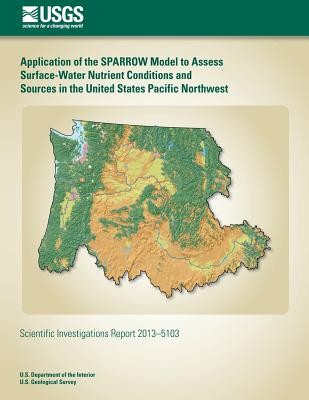
- We will send in 10–14 business days.
- Author: Henry M Johnson
- Publisher: CreateSpace Independent Publishing Platform
- Year: 2014
- Pages: 40
- ISBN-10: 1500551589
- ISBN-13: 9781500551582
- Format: 21.6 x 28 x 0.2 cm, softcover
- Language: English
- SAVE -10% with code: EXTRA
Application of the SPARROW Model to Assess Surface-Water Nutrient Conditions and Sources in the United States Pacific Northwest (e-book) (used book) | bookbook.eu
Reviews
Description
The watershed model SPARROW (Spatially Referenced Regressions on Watershed attributes) was used to estimate mean annual surface-water nutrient conditions (total nitrogen and total phosphorus) and to identify important nutrient sources in catchments of the Pacific Northwest region of the United States for 2002. Model-estimated nutrient yields were generally higher in catchments on the wetter, western side of the Cascade Range than in catchments on the drier, eastern side. The largest source of locally generated total nitrogen stream load in most catchments was runoff from forestland, whereas the largest source of locally generated total phosphorus stream load in most catchments was either geologic material or livestock manure (primarily from grazing livestock). However, the highest total nitrogen and total phosphorus yields were predicted in the relatively small number of catchments where urban sources were the largest contributor to local stream load. Two examples are presented that show how SPARROW results can be applied to large rivers-the relative contribution of different nutrient sources to the total nitrogen load in the Willamette River and the total phosphorus load in the Snake River. The results from this study provided an understanding of the regional patterns in surface-water nutrient conditions and should be useful to researchers and water-quality managers performing local nutrient assessments.
EXTRA 10 % discount with code: EXTRA
The promotion ends in 17d.21:04:22
The discount code is valid when purchasing from 10 €. Discounts do not stack.
- Author: Henry M Johnson
- Publisher: CreateSpace Independent Publishing Platform
- Year: 2014
- Pages: 40
- ISBN-10: 1500551589
- ISBN-13: 9781500551582
- Format: 21.6 x 28 x 0.2 cm, softcover
- Language: English English
The watershed model SPARROW (Spatially Referenced Regressions on Watershed attributes) was used to estimate mean annual surface-water nutrient conditions (total nitrogen and total phosphorus) and to identify important nutrient sources in catchments of the Pacific Northwest region of the United States for 2002. Model-estimated nutrient yields were generally higher in catchments on the wetter, western side of the Cascade Range than in catchments on the drier, eastern side. The largest source of locally generated total nitrogen stream load in most catchments was runoff from forestland, whereas the largest source of locally generated total phosphorus stream load in most catchments was either geologic material or livestock manure (primarily from grazing livestock). However, the highest total nitrogen and total phosphorus yields were predicted in the relatively small number of catchments where urban sources were the largest contributor to local stream load. Two examples are presented that show how SPARROW results can be applied to large rivers-the relative contribution of different nutrient sources to the total nitrogen load in the Willamette River and the total phosphorus load in the Snake River. The results from this study provided an understanding of the regional patterns in surface-water nutrient conditions and should be useful to researchers and water-quality managers performing local nutrient assessments.


Reviews